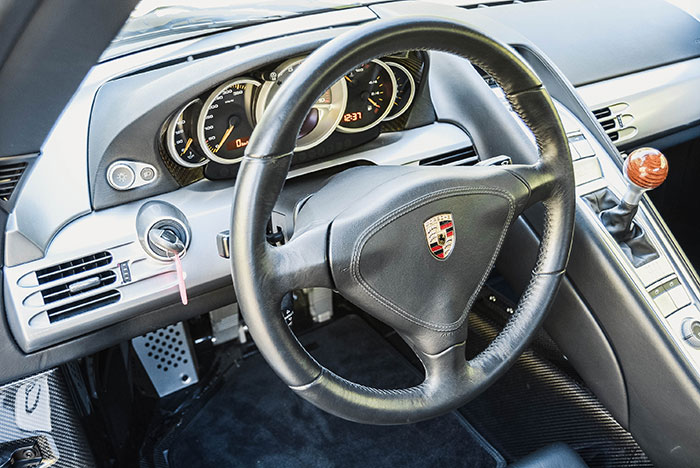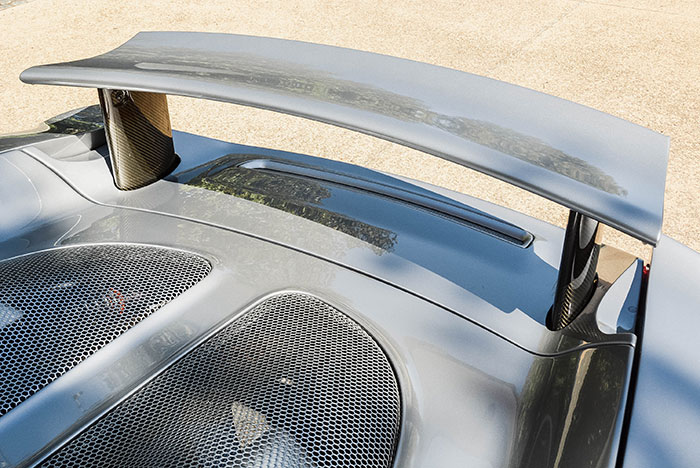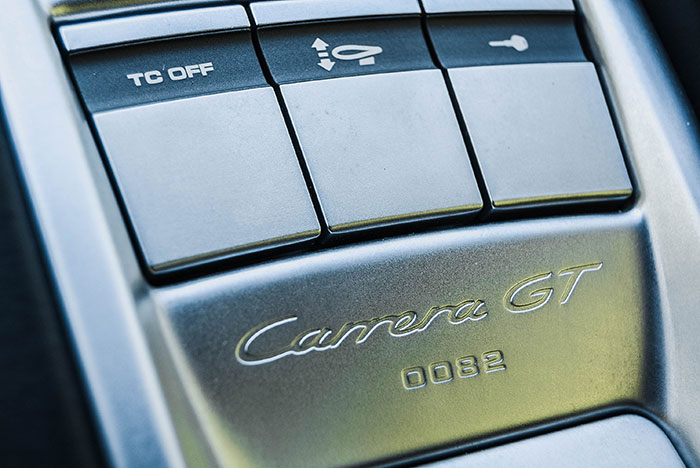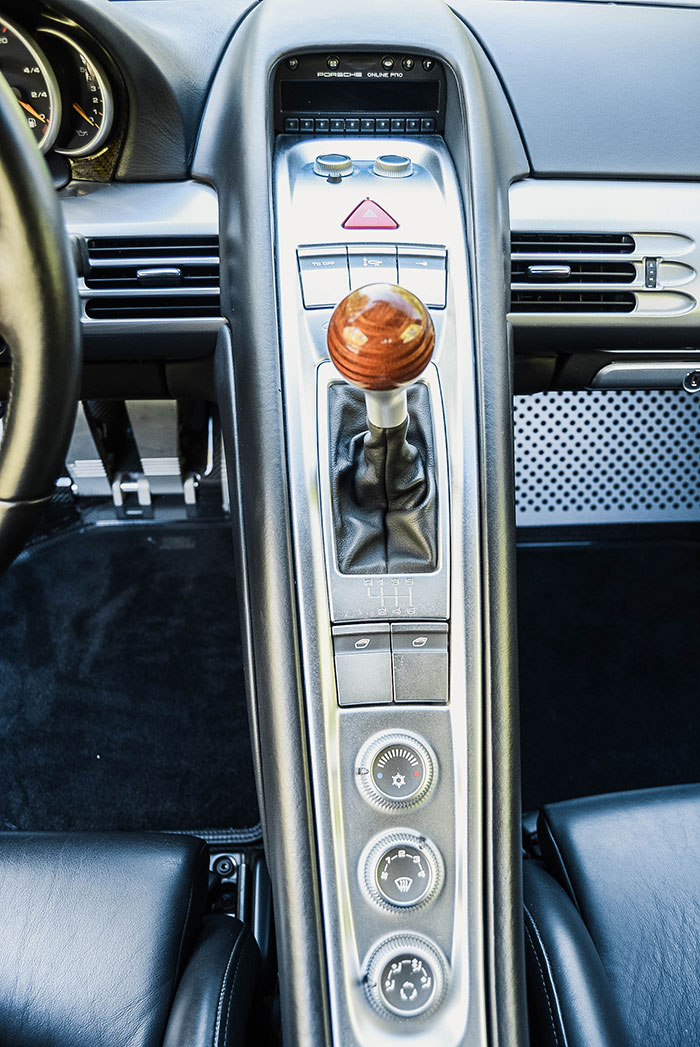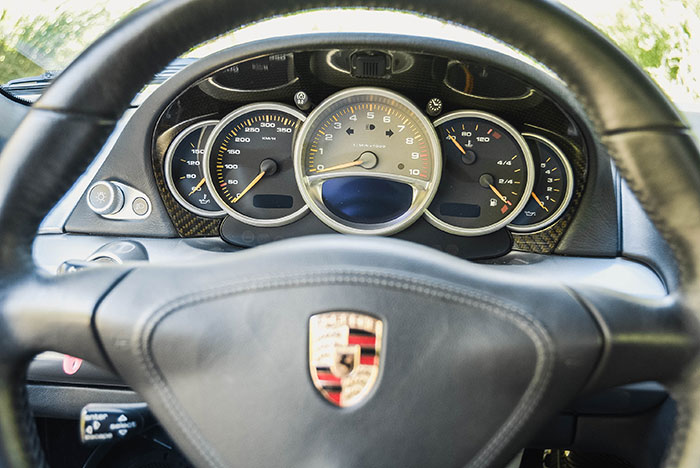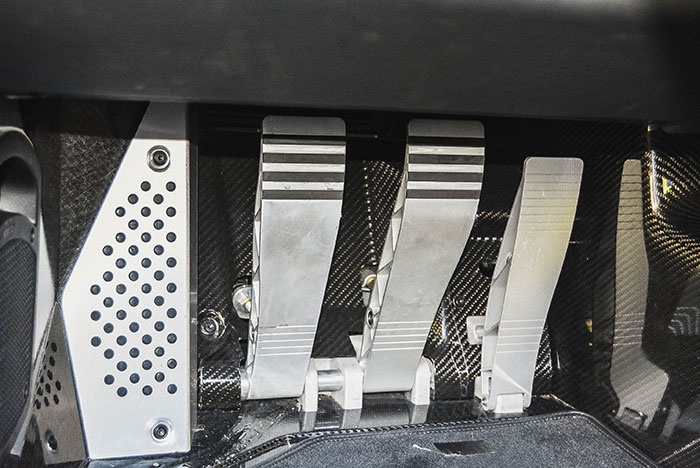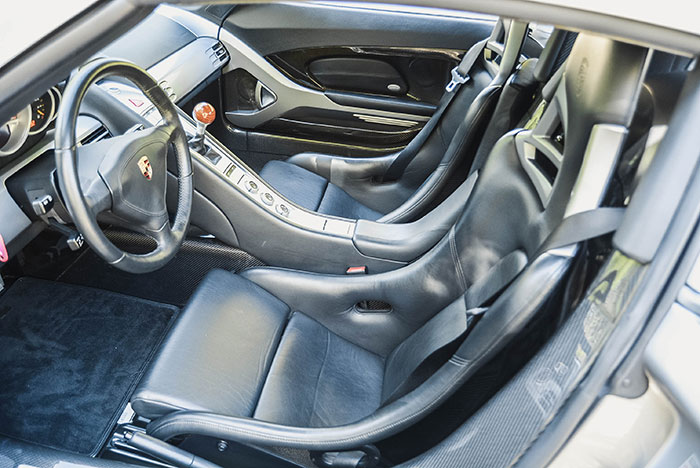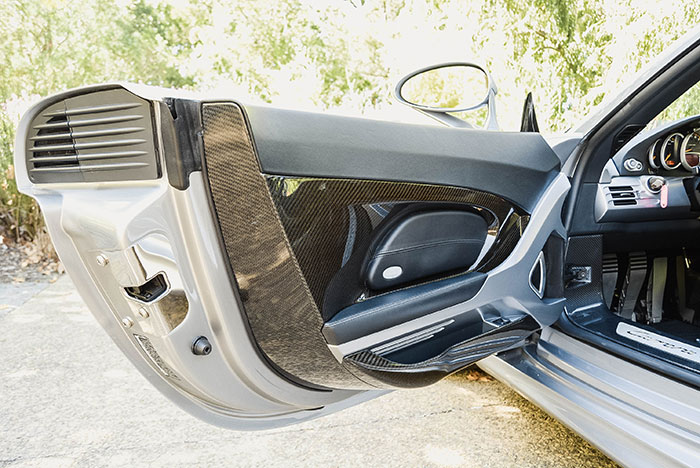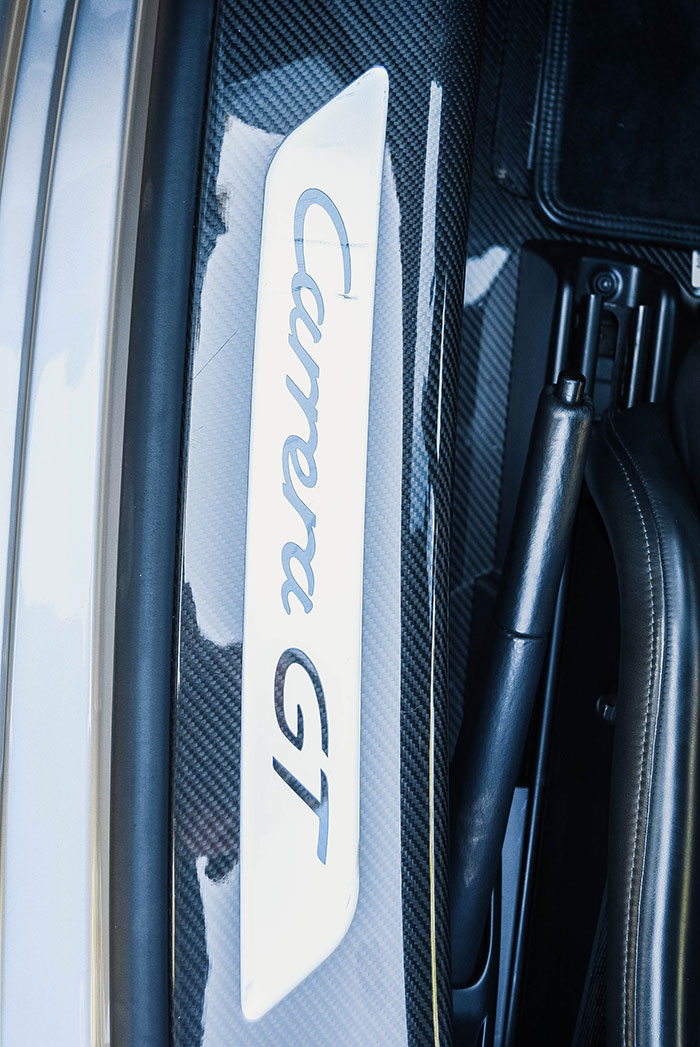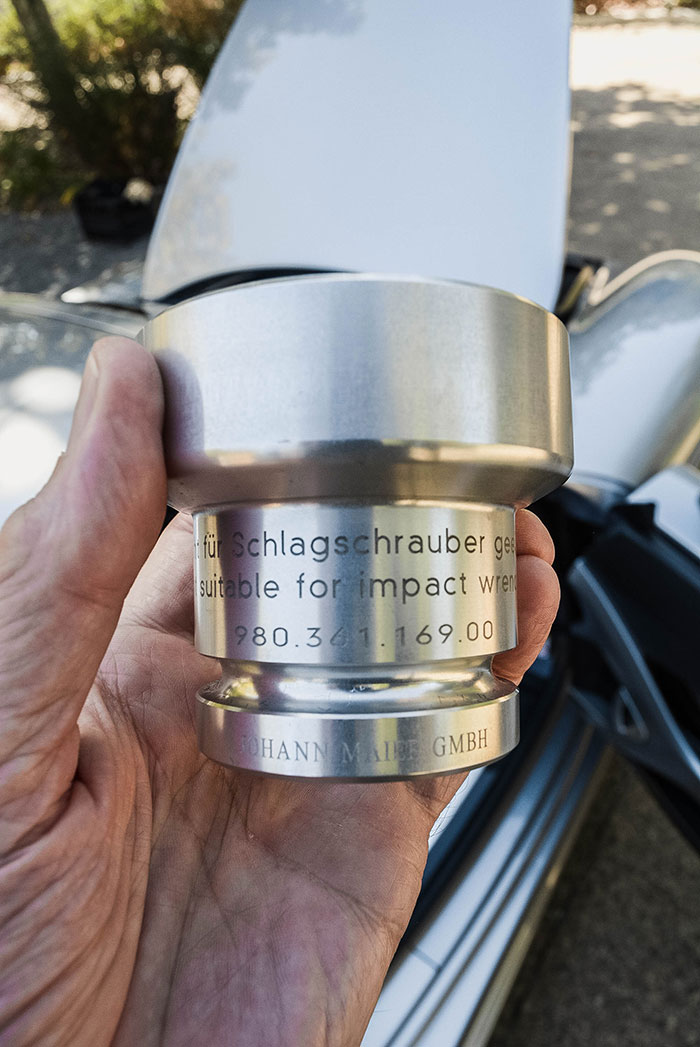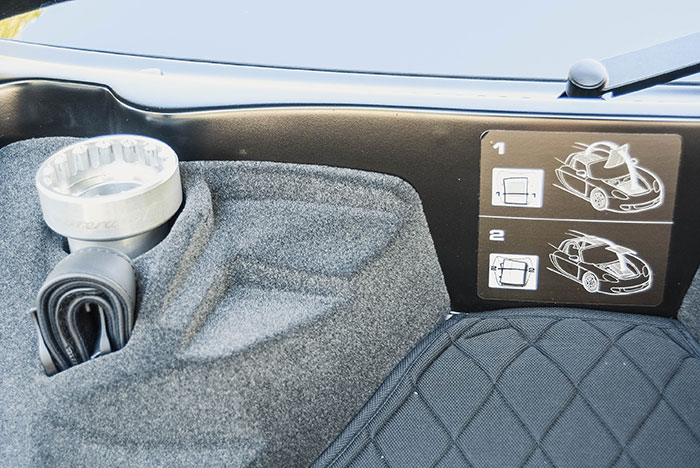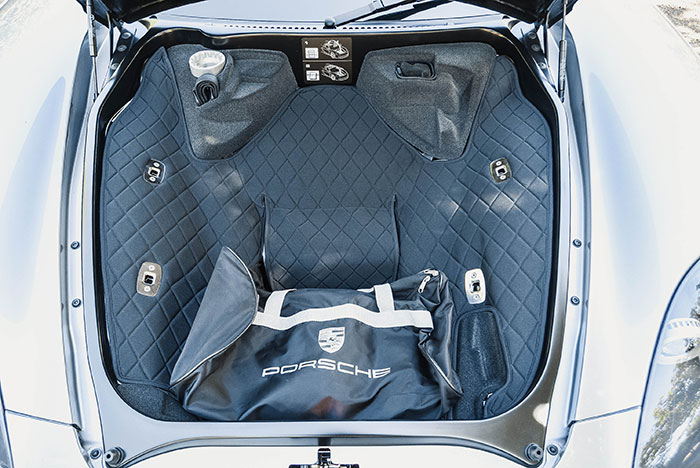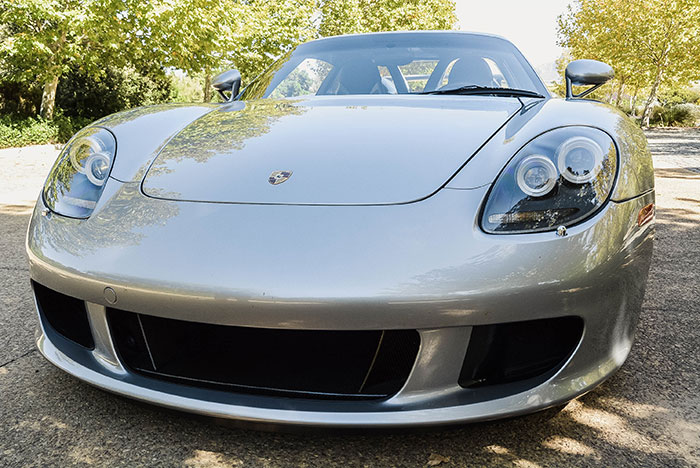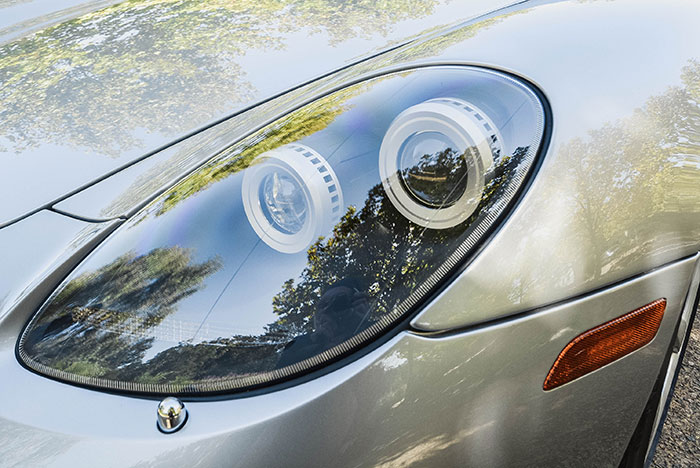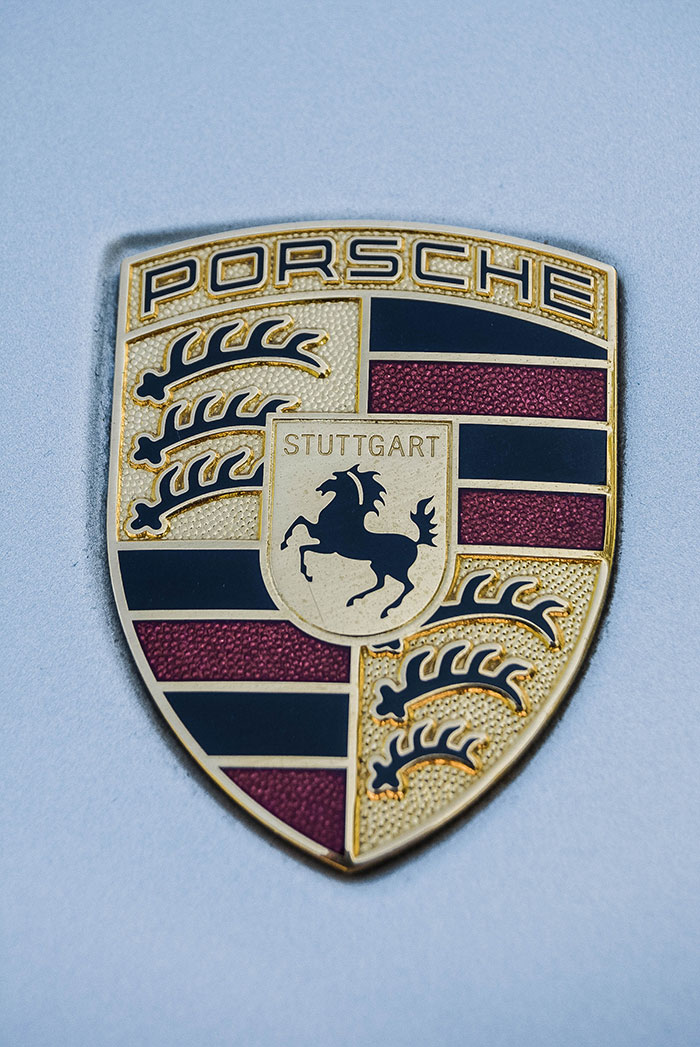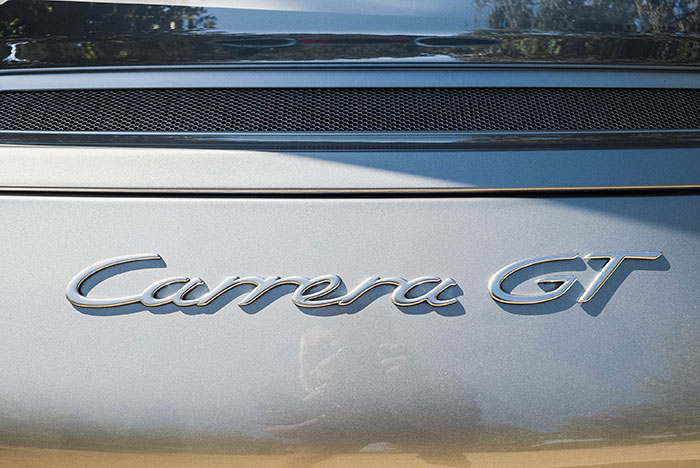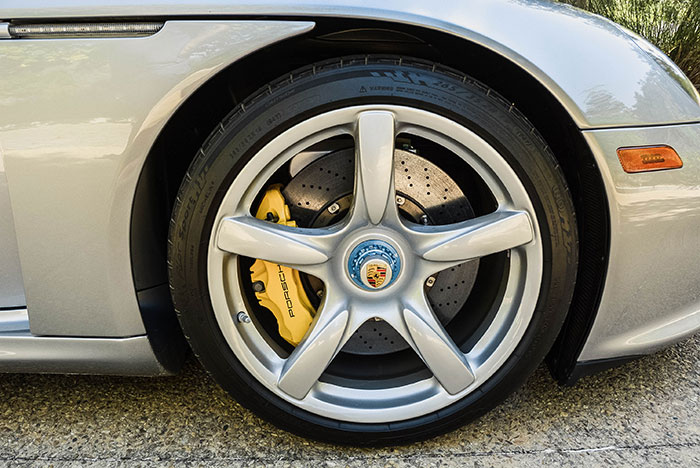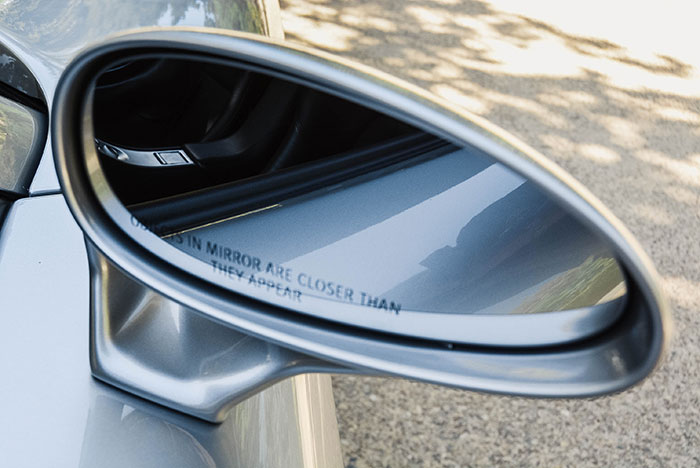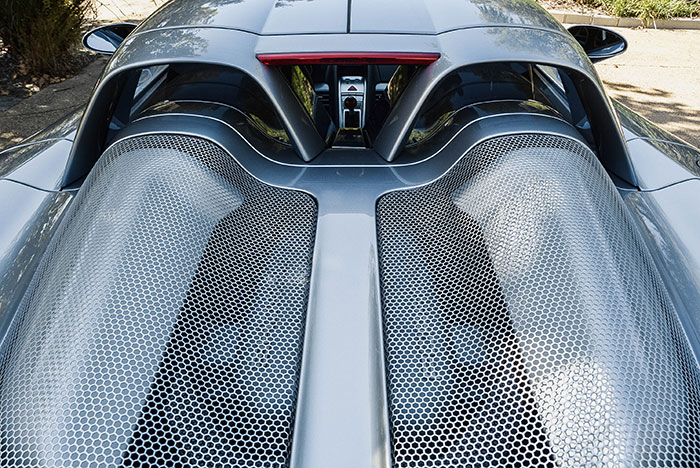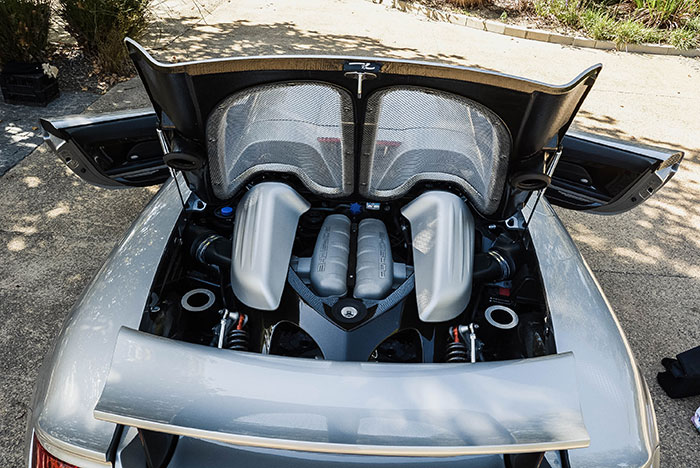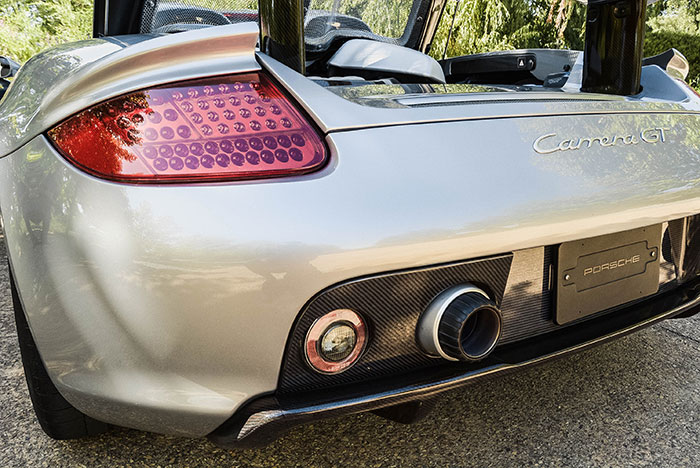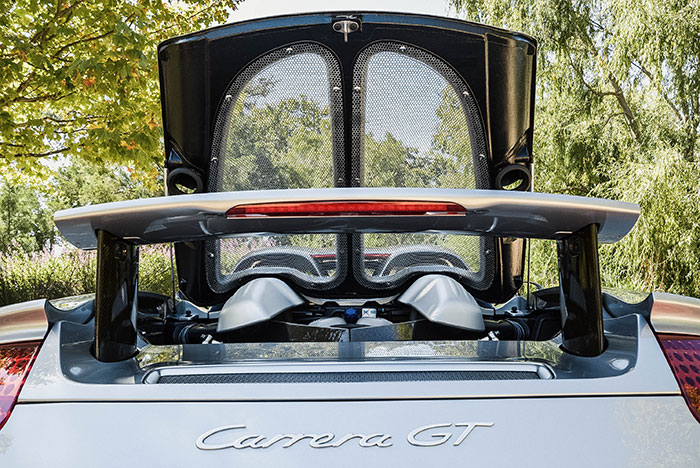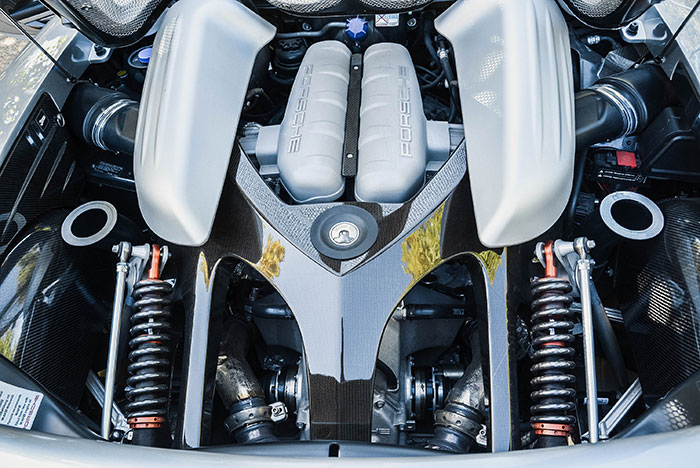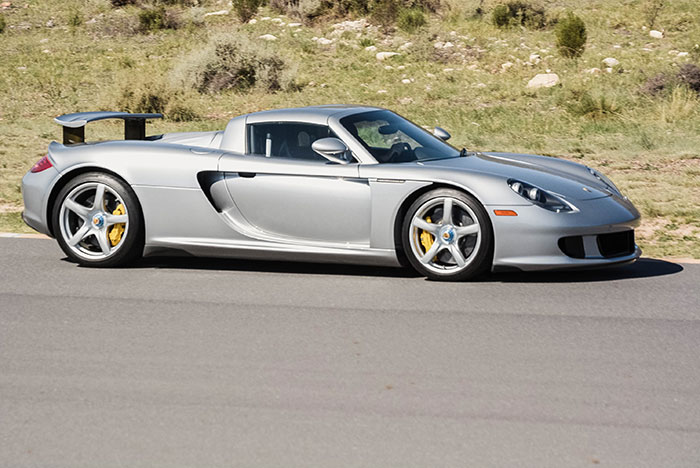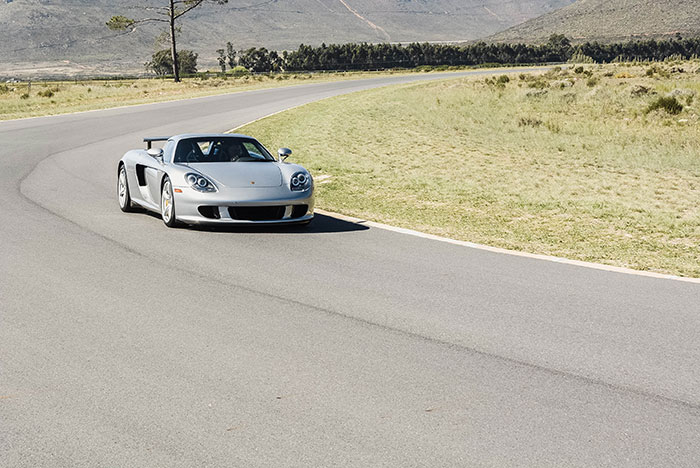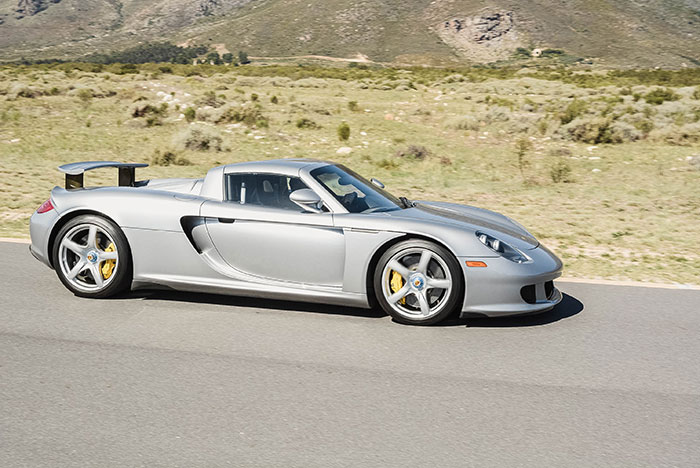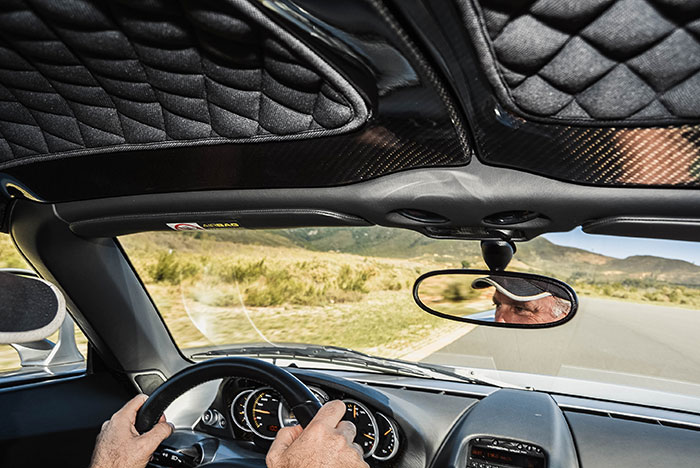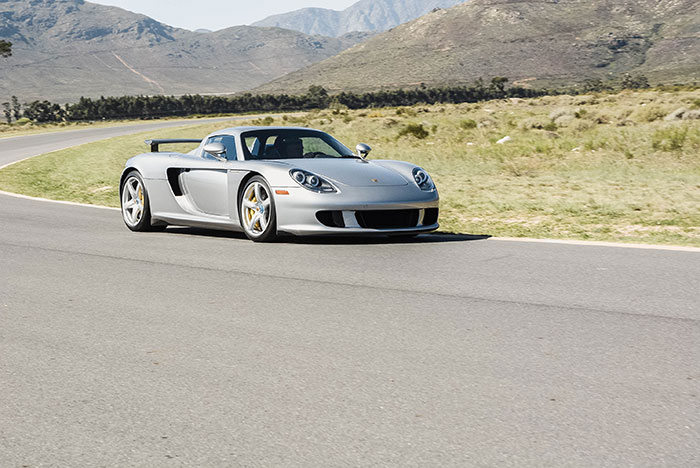
26 Jul Collection in Action: Porsche Carrera GT
Porsche celebrates its 70th anniversary this year, and Mike Monk drives a rare version of the breed
Porsche has a glittering history of memorable cars but amongst the formidable line-up there is a mid-engined supercar that came about more by accident than planning. In Porsche-speak, the name Carrera GT immediately evokes the highest levels of performance and the car certainly lives up to expectations in this regard, but it is also something of a technology masterpiece. The combination makes for a supercar worthy of such a title.
The Carrera GT’s origins go back 20 years to when the 911 GT1 and LMP1 were Porsche’s tools for tackling world sports car racing. The 911 GT1 was aimed at the GT1 class, the rules of which required a street-legal version for homologation purposes, while the LMP1 car contested the top class at Le Mans. But rule changes by the governing bodies in both categories rendered these models obsolete. A new car was prepared for the 1999 season but the project was cancelled after just two days of testing. Primarily, this was as a result of Porsche pooling its resources with involvement from VW-Audi into the development and introduction of the Cayenne SUV. This included calling on the engineering expertise of the motor sport division. Mind you, it is also thought that VW-Audi chairman Ferdinand Piëch did not want competition for the upcoming Audi R8 LMP1 car…
But rather than waste what had been done already, Porsche showed the car as an attention-grabber at the 2000 Paris Motor Show, and it retained the 5,5-litre 416 kW V10 that was used in the prototype. The original intention was to use a turbocharged flat-six but the car was redesigned to accept the V10 that had secretly been built for the Footwork Formula 1 team, which never saw the light of day. As time went on and funds became available, thanks to the immediate success of the Cayenne, Porsche decided to build the car in limited numbers at a new manufacturing plant in Leipzig, with the motor increased in size to 5 733 cm3.
The all-aluminium, quad-cam, 68-degree V10 featured Nikasil-coated bores, forged titanium connecting rods, forged pistons, four valves per cylinder, variable inlet valve timing, sodium-cooled exhaust valves and dry-sump lubrication. Naturally aspirated, with a red line at 8 400 r/min, it pumped out 450 kW at 8 000 and 590 N.m of torque at 5 750. But what set this motor apart from the norm was the absence of a flywheel, which allows the engine to dial up the revs without having to first overcome the rotating mass of the flywheel. Result? Quicker accelerator response. Switching off, the motor comes to a dead stop. Connecting the motor to the six-speed manual gearbox was a PCCC – Porsche Ceramic Composite Clutch.
The first Carrera GT – the model code number is 980 – was sold in the States at the end of January 2004. Car & Driver magazine road-tested it in June the same year and recorded a 0-60 mph (96 km/h) time of 3,5 seconds and 0-100 mph (161 km/h) in 6,8 seconds, which backed up factory claims. Porsche gave the top speed as 330 km/h. The brake spec was no less impressive, namely 380 mm internally vented and cross-drilled carbon-fibre reinforced ceramic discs with six-piston calipers. Germany’s Sport Auto magazine registered a lateral acceleration of 1,35g, and 1,4g was reached at the Schwalbenschwanz section of the Nürburgring’s famous Nordschleife.
The body is a carbon fibre monocoque with subframes to carry the mechanical assemblies. Air scoops help keep the motor cool and the electrically-operated rear wing automatically rises at 110 km/h but can be activated at lower speeds. The car has a drag coefficient of 0,39.
A production run of 1 500 units was planned in a choice of five colours but changing US airbag legislation resulted in a premature end in 2006 after close to 1 300 cars had been sold, half in the USA. This car is number 82 and features the beechwood gear knob that was fitted to the early cars, a novelty that was used in the iconic Porsche 917 Le Mans car.
Left-hand drive, the ignition switch is located to the left of the steering wheel , a layout that harks back to the early days of Le Mans where at the start of the race, drivers had to sprint across the track, jump in, start up, engage gear and go racing. The ability to switch on with the left hand and engage first with the right saved milliseconds…
Stepping into a supercar is always a special experience, and FMM’s Carrera GT was no exception. It is trimmed in typically Porsche quality materials and the racing bucket seat comfortably hugs the torso. Firing up is instantaneous, the gate for the gear lever ensures positive engagement, the clutch is firmly weighted and the car moves away with complete ease, something early road-race sports cars did not always provide. The massive aluminum pedals and foot rest are offset towards the centre but the driving position is spot on, and the view forward uninterrupted. As for looking behind, it is easier to use the exterior mirrors, especially if the wing is erect.
With an open track to play on, the car simply amazed with its poise. Sure, it is based on a race car project and one would naturally expect the performance and handling to be of the highest order. However, these attributes do not always automatically carry over to a road car; such is the requirement for some built-in civility. But this 14-year-old Carrera GT simply wowed me with its utter composure, not to mention the blaring exhaust note that adds drama in the build-up to each gear shift, up and down. The V10 may seem all top end on paper, but torque delivery is strong from mid-range revs. It is just that the fun is in keeping the motor on the boil between 6 000 and 8 000 r/min. Grip, braking, turn-in are all precise and it is only when glancing at the instruments that you realise just how hard you are going – safely.
The Carrera GT is a confidence-inspiring supercar that had a sheltered existence. We can only wonder at what might have been…
